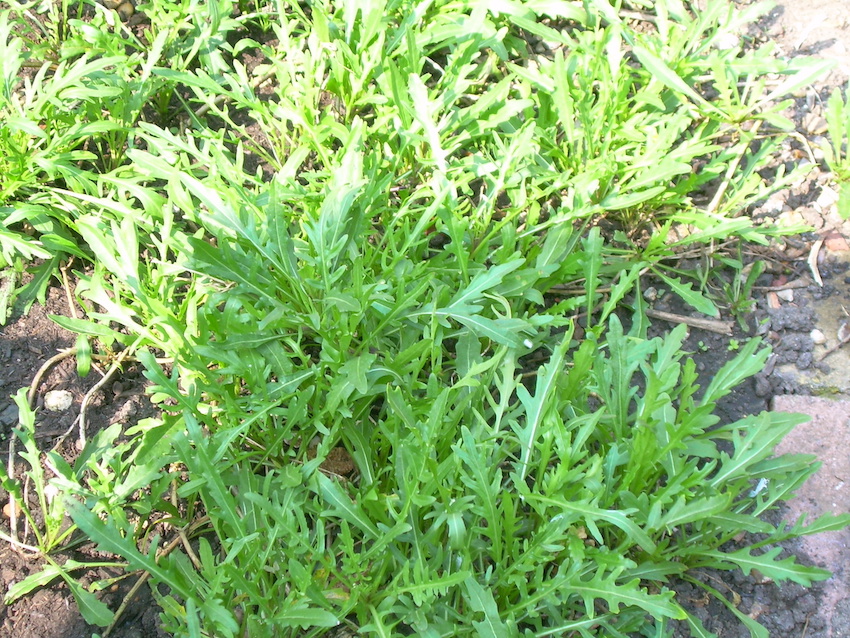Sustainable Food Futures 2

Biodynamic grower and Fricot Local! organiser Robert Allen is dismayed by the failure of government to recognise the need for sustainable food security systems despite the amount of literature on the subject and agreements to reduce emissions from cattle by 2050
Serendipity is a big word. Sadly it is often twinned with two other big words, selfishness and stupidity, one after the other. Serendipity is often defined to mean luck. It is more than that and much more than discovering something by accident. Thirty years ago I experienced several moments in time that were serendipitous and I let them slip away.
There was a group of us, eating dinner in a small restaurant in a small village in Connemara, talking quietly between mouthfuls. There was a consensus that the time was right for another paradigm shift in society. Unfortunately there was also disagreement.
The impasse was broken when one of the group, a young woman who had just completed a course in organic farming, took us to a garden meadow below the Jura mountain range in the village of Arlesheim, Switzerland.
It was a warm blue-sky summer day, she said. Ehrenfried Pfeiffer and Guenther Wachsmuth had given each other worried stares. Six months earlier at the behest of Rudolf Steiner they had buried cow horns filled with cow manure and had made a mental note of the area. The sun had lengthened. Steiner had consulted his watch. His five o’clock appointment had beckoned. Time had run out.
Pfeiffer would later recall the moment when he realised that finality. ‘It was a sunny afternoon. We began digging at the spot where memory, aided by a few landmarks, prompted us to search. We dug on and on.’ Sweat beads were seen on Pfeiffer’s brow. Somewhere under their feet was the proof that soil could be regenerated and they had lost it.

Finally a spade grated on a cow horn. It was a special moment in time. They had dug up the first batch of Steiner’s ‘preparation 500’. Everything changed. This was the agriculture of tomorrow. Pfeiffer and Steiner had their antidote to the chemical industry’s fertiliser revolution. The horn manure had been converted into a sweet smelling natural humus, a substance Steiner argued would ‘heal the earth’.
That moment in Arlesheim was the genesis moment of the biodynamic movement. Several weeks later, in June 1924, at the Carl Keyserlingk estate in Silesia, Steiner convened an agricultural course. Anthropologist John Paull called it the world’s first organic agricultural course. Rudolf Steiner, said Paull, had the prescience to foresee the negative impact of the agro-chemical industry.
By the end of the 1940s the biodynamic method suggested an alternative to the monoculture method that had gripped agriculture since the introduction of synthetic treatments two decades earlier. ‘The average farmer wastes more humus than he returns to the soil and endeavours to remedy this with chemical fertilisers,’ American Haydon S. Pearson suggested in a syndicated newspaper column in 1948. ‘Biodynamic farming may never become in general use but indications are that farming in future must work with, and not against, nature.’
Pearson was adamant.
‘Biodynamic farming means that soil will be used for the purpose for which it is best fitted. Great areas are meant to be forests; millions of acres will best fulfil nature’s plan as grassland. Tens of thousands of share croppers’ and tenants’ farms will have a big garden, and raise fruits and grains, the food for the family and its livestock. It is a tragic misuse of soil that a farm should all be planted to one crop, and men and animals lack for healthful foods.’
‘When farmers come to realise the value of this philosophy they will see that it means diversified farming, not one-crop farming. The basis of successful agriculture is livestock, rotation of crops, several lines of income, food production for the farm unit. The theories of biodynamic farming are in accord with a sound philosophy of agriculture.’
Instead NPK ruled and chemical treatments became the foot soldiers of the green revolution. A decade later Ehrenfried Pfeiffer lamented the impact.

‘Experienced entomologists, who have witnessed the failure of chemical pest-control and the threats to health associated with it, are beginning to speak out and demand biological controls. But according to the findings of one of the American experimental stations, biological controls are feasible only when no poisons are used and an attempt is made to restore natural balance.’
Today horn manure is known as a key component in the biodynamic method. Correctly applied, it can regenerate the soil through the stimulation of microbial activity and the dissolution of minerals. It can regulate the pH balance of the soil, and it can aid seed germination and root development.
The concept of what is now called ‘community-supported agriculture’ had its roots in the third organic revolution, following the Steiner inspired initiatives of the 1920s and the various initiatives around the world in the 1970s, and our little group believed it could act as a catalyst to convince farmers to adapt. It was, to coin that cliche, easier said than done.



The first initiative was a vegetable box delivery scheme, the second was a farmers’ market and the third a permanent school with land to teach young farmers how to grow and raise organic food. The first two initiatives got off the ground with more ease than we expected and, when we learned that some land with planning permission had become available, there was a strong feeling of serendipity. It was short-lived.
Despite an emerging group of farmers around the country willing to ‘try’ the organic method and operate box schemes and organise farmers’ markets, the momentum was lost. Instead it was countries like Austria who set the new standard, converting their farmland to the organic method, with some farmers adopting the Steiner method with soil ‘made’ from cow manure.
If our quantum moment in the early 1990s was truly serendipitous, a lucky event ephemeral by nature, we had missed an opportunity and I think it is fair to say that we were selfish with our ambition and stupid with our behaviour. We had been given an opportunity to introduce a short supply chain, for herbs, legumes and vegegtables in particular, and make it permanent. The land we believed would allow to build a future farming school was lost because we could not carry our argument for its use. Teaching young farmers the organic method in the 1990s would have changed the landscape.
British and Irish farms today are dominated by the agro-chemical system of farming and there is scant evidence to suggest that bio farming and organic farming will ever be adopted despite the knowledge that is now apparent in the libraries of the schools of the damned, because that is what it feels like.
Some years ago I found myself caught up in the curiously named sustainable food security system consortium, thrust into the heart of Berlin to produce a document to persuade the European Union to fund sustainable food security systems across the continent.
That was never going to be allowed. Sustainable food security systems would be technological, they would not be communal. And the libraries of the damned would not be opened to anyone to learn how to make a sustainable food security system and apply it to farmland and a different model of agri-food production. It did not take long for me to realise there is total lack of knowledge among the general population about food security and that includes bureaucrats and politicians and those who hold the purse strings in central and local government. An understanding of sustainable food security systems is akin to an understanding of blockchain technology and quantum computing. It might as well be science fiction.
Just as we had done following the restaurant meeting in 1992 and led the initiative to find kindreds in the west of Ireland, it appeared that the concept of an integrated system networked to bring farmers, growers and horticulturists together in 2022 would have a better chance of continuous survival. After all there was almost 100 years of experience to draw from, with farm co-operatives and food collectives supported by communities and clever space use from rooftop growing to 7-storey growing and the tried and tested community allotments.
Food security is a curious issue in the British Isles. In Ireland 90% of the food produce grown and raised is exported, while just less than 90% is imported. Food is a commodity! The short supply chain does not exist. And neither, it would seem, is there a food security problem. Instead there is a world of competing stupidities fuelled by a selfishness that should be alien nature to people whose antecedents once practised mutual aid by default.
In 1992 we had several people who were willing to act as catalysts to find kindreds to ‘grow local’. In 2022 we are failing to find people who have an awareness of the issues surrounding food security and what should be a requirement for ‘go local’ initiatives to create micro economies that will generate sustainable futures.

Meanwhile on our little farm we continue to produce herbs, legumes and vegetables using the ‘magic’ mixture Rudolf Steiner realised was a natural consequence of manure management by bacteria and worms and other quantum events. Erwin Schrödinger would be delighted to learn that we have a cat without a box, in our reality dispensing with the cow horn, replacing it with nothing more than time and a different perspective.
Are quantum realities really easier to understand than soil realities and the concept of food produced locally for local consumption? It would seem so. Clearly what we need is another moment of serendipity!
